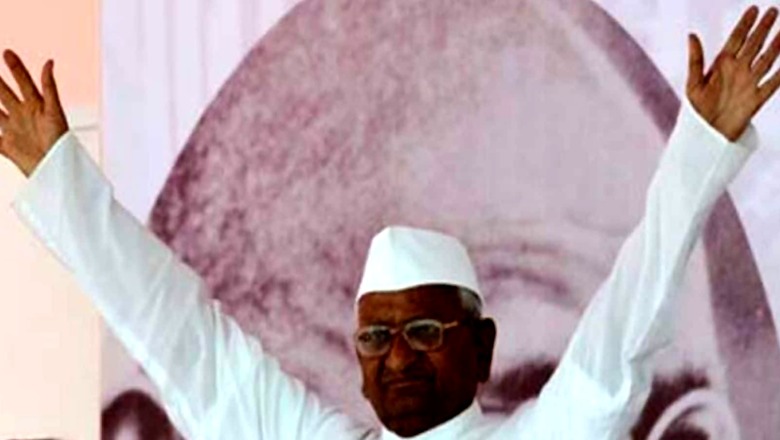
views
It was the year 2011 when a 74-year-old soldier-turned-social reformer grabbed the national headlines with his campaign for an effective anti-corruption law. Clad in his white kurta pajama and Gandhi Topi, Anna Hazare reintroduced Gandhi to the youth, brought back the sartorial symbol of India’s freedom movement, and made it appear extremely cool.
Gandhi Topi, a slim boat-shaped cap often worn with a slight tilt was high in demand since the 1900s but the Gandhian reformer’s adorning it pushed its popularity to its peak. The topi was once worn by Mahatma Gandhi who spearheaded the freedom movement and it was adopted again by Hazare years later who stood like a wall in his fight against corruption.
The white-colored Gandhi cap was made popular by Mahatma Gandhi during the Indian independence movement. It was then adopted by India’s first prime minister Jawaharlal Nehru, followed by Lal Bahadur Shastri and Morarji Desai. Even freedom fighter Subhas Chandra Bose wore a cap to symbolize his military ambitions.
Also Read: Return of Gandhi Topi: Bollywood stars don the ‘Anna Cap’!
The emergence of the cap is rooted in the non-violent protest in South Africa before the First World War. Gandhi and other jailed Indian protesters were obliged to follow the dress code of black prisoners, which included the cap. When Gandhi returned to India, he adopted the custom of wearing clothes made with homespun “khadi” cotton. Along with the cap, this became the uniform of the self-reliance movement.
Its political revival however came with the rise to prominence in 2011 of the anti-corruption activist, Anna Hazare. He adopted one of Gandhi’s hallmark methods of campaigning, the public hunger strike, and his choice of headwear further strengthened the association with the man India knows as “Bapu”, the father of the nation.
It had become the “new fashionable item of radical chic” as quoted by Economic and Political Weekly.
From street vendors to urchins to even the Bollywood biggies, everyone was seen sporting the Gandhi topi. To add to the craze, as many as 20 students of IIT Kharagpur decided to give their graduation caps a miss on the convocation day and instead receive their degrees in ‘Gandhi Topi’.
Hazare, a True Gandhian
Over the years the revolt strategies of Hazare have been subject to comparison with those of the Gandhian principles. A true Gandhian, Anna has through his peaceful struggle, using the non-violent weapon of fasting, succeeded in getting some revolutionary laws legislated in Maharashtra. Most of his hunger protests were undertaken at the Yadavbaba Temple where he lived, and sometimes at the Azad Maidan in Mumbai. Soon, Hazare stepped up on the national stage, to become an instant icon of the nation, and especially for the youth.
One of his early feats mirroring those of Gandhi was on the ban on alcohol which had long troubled the villagers and youth of his native Ralegan Siddhi. Consumed by a passion to make a difference, he encouraged fellow villagers to adopt five commandments, a ban on alcoholism; a ban on cattle grazing; water conservation; family planning; and shram daan (voluntary physical labour). Soon Ralegan Siddhi was turned into a sterling model village that even Gandhi himself would have been proud of.
Read all the Latest News , Breaking News and IPL 2022 Live Updates here.



















Comments
0 comment